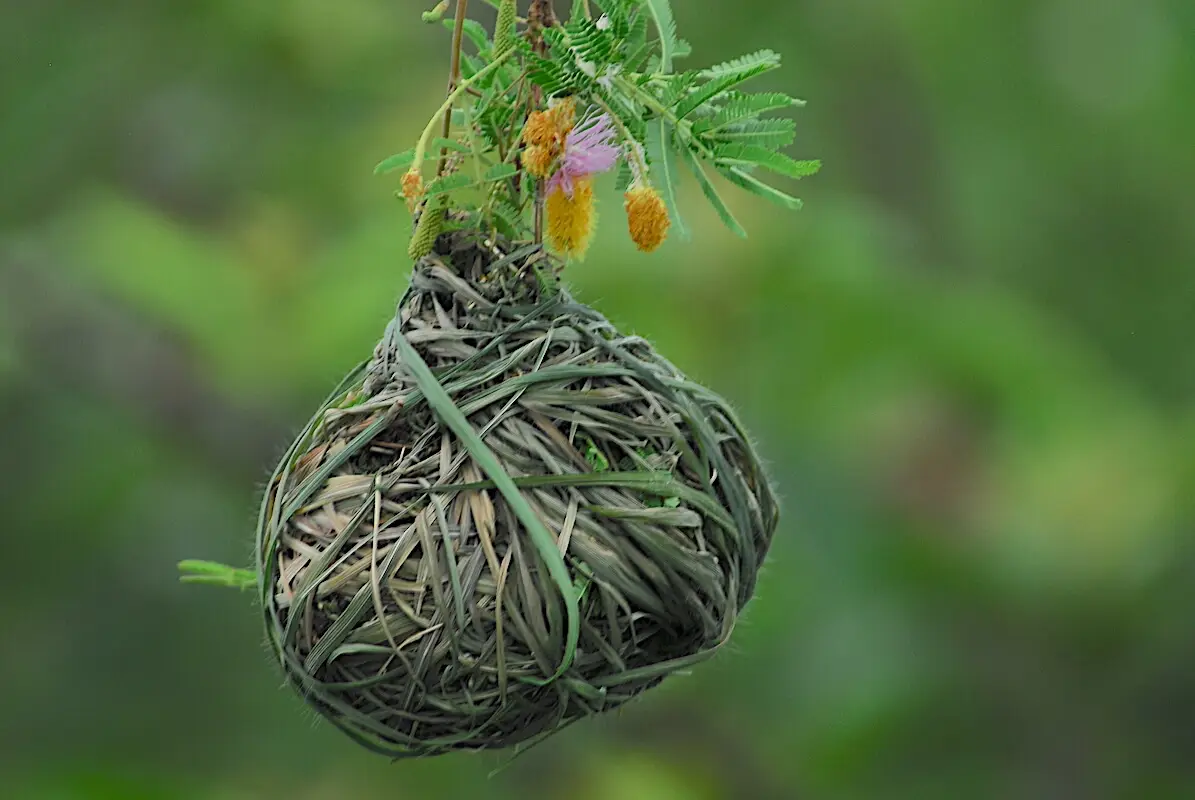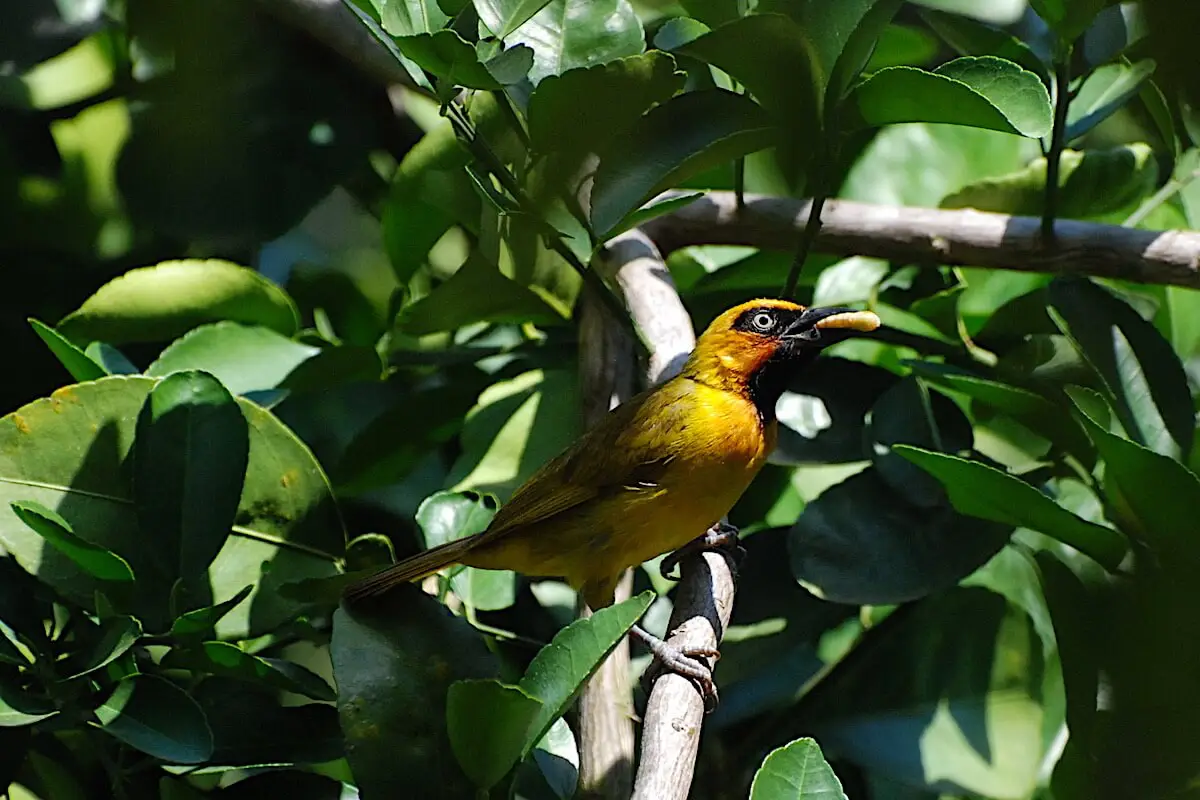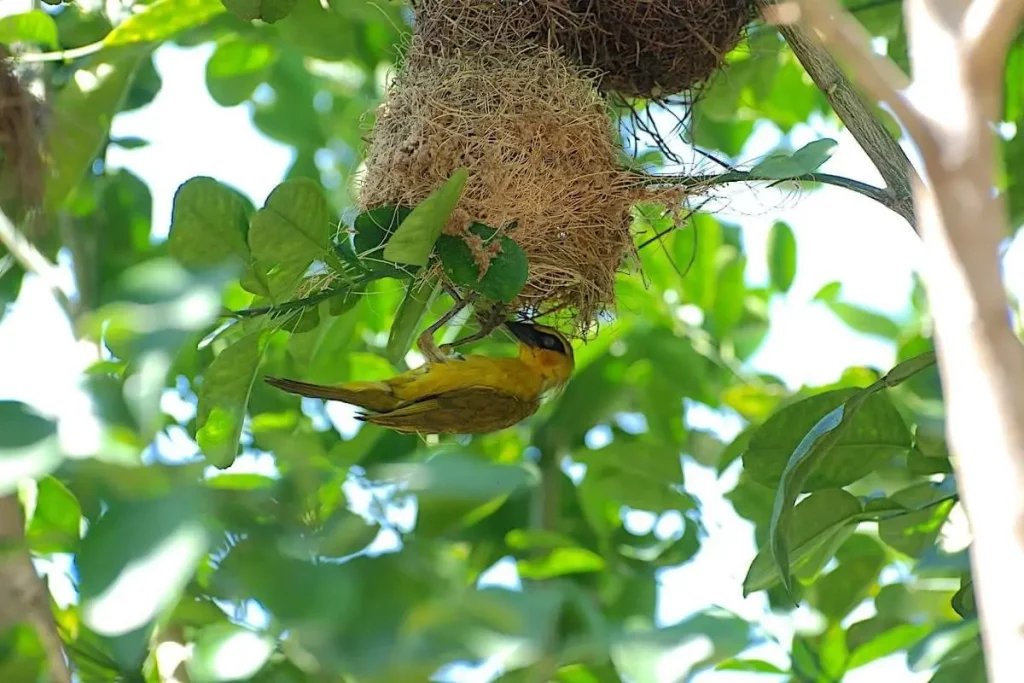Heuglin’s Masked-weaver hardly rolls off the tongue, does it? There are many kinds of Weaverbirds. Most are fairly unextraordinary in their looks but some such as The Northern Red-bishop are extraordinary in theirs. Weavers are so-named because of the way they weave their nests from leaf fibres like a basket. They can leave Palm-trees shredded into tiny strips in next to no time getting materials for their hanging nests which have complex entrance tunnels and are incredibly strong. When they are finished with their nest other birds like to move in because not many birds can build a nest as well as a Weaver.
Where is the Heuglin’s Masked-weaver found?
As mentioned earlier, this little bird is a daily visitor at Footsteps.
Outside of our lodge, the vast majority of Weaverbird species are in Africa, although there is a small number which lives in Asia. Many species inhabit the tropical regions of Africa, though they live throughout the continent.
In Gambia for example this little bird is found near villages hence “Village Weaver” and also generally fairly common in forest interiors.
What does it look like?
Heuglin’s Masked-weaver as its name suggests has a masked face. It has a yellow/orange body and grey legs.
What does it feed on?
They feed mainly on insects such as grasshoppers, praying mantis, worms, crickets, dragonflies, and cockroaches as well as moths, spiders and seeds
Want to know an interesting Factoid?
There are about 117 species of weavers worldwide and a fair number of those can be found In The Gambia. Source Wikipedia
How does it sound?
They make a repetitive swii swii swii swii swii sound and because there tend to be lots of Weavers congregating in one place, the noise can be tiresome at best and deafening at worst.



